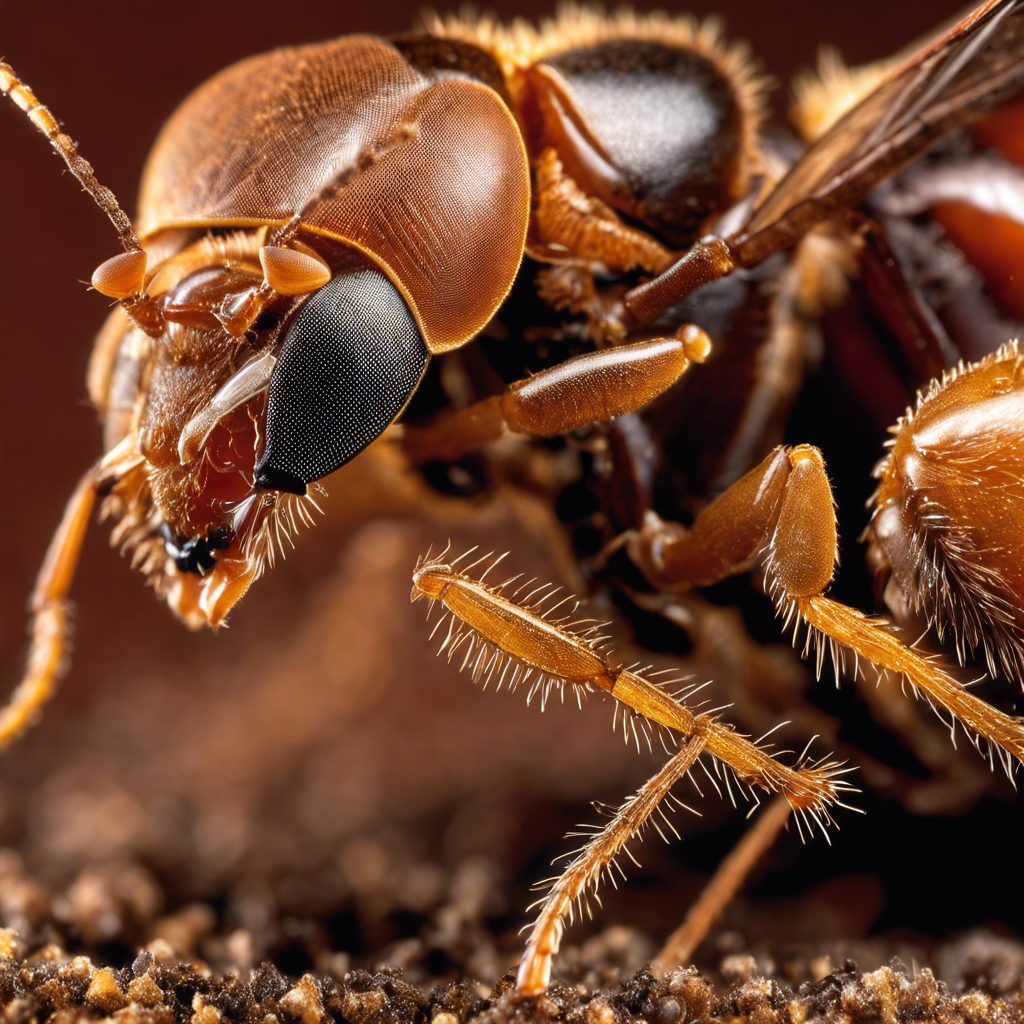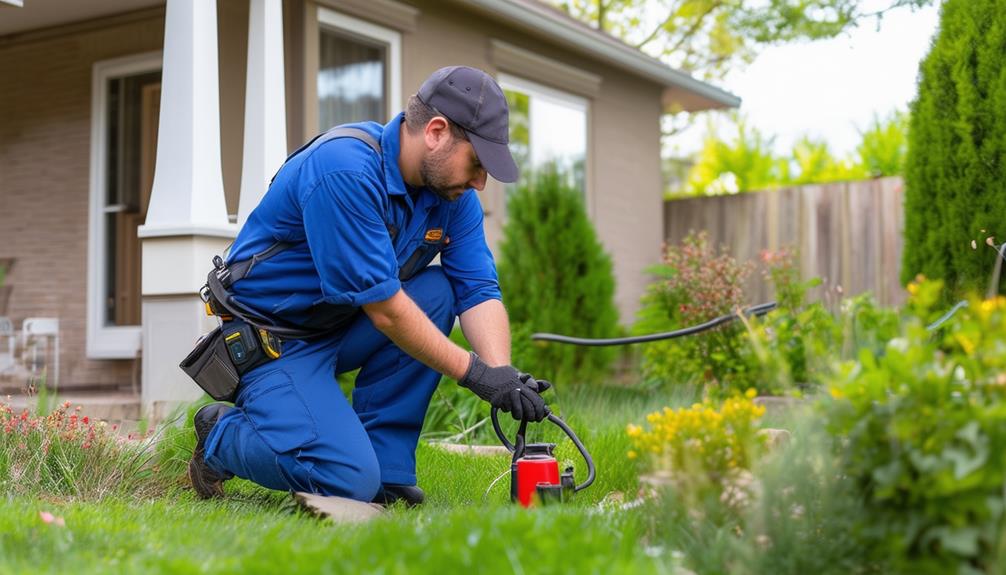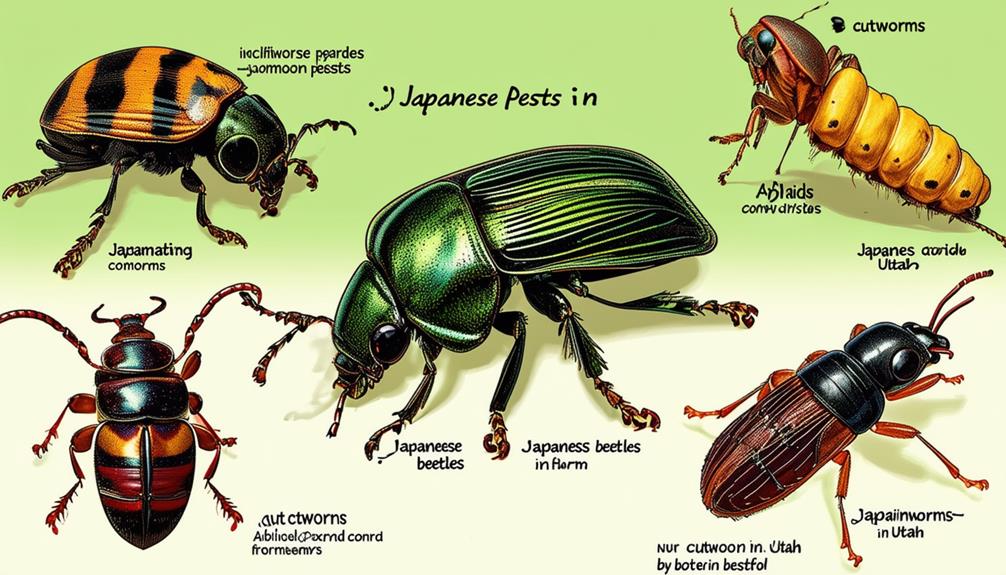Are you constantly perplexed by the sight of tiny, scurrying insects in your home or garden? Like trying to distinguish a drop of water from a bead of sweat on a hot summer day, identifying ants versus termites can be a challenging task.
However, fear not, as this discussion will shed light on the key differences between these two pests specifically in the state of Utah. By understanding their physical characteristics, behavioral traits, and signs of infestation, you will gain the knowledge needed to combat these intruders effectively.
So, let’s embark on this journey of discovery and unravel the secrets of distinguishing ants from termites in Utah.
Key Takeaways
- Ants have narrow waists, while termites have broad waists.
- Termites have straight antennae with beads or balls, while ants have elbowed antennae.
- Ants typically have a black color, while termites can range from dark brown to a lighter, creamy tan or white hue.
- Termites consume the wood in which they nest, while carpenter ants excavate wood for their nests but don’t eat it.
Physical Characteristics of Ants and Termites
When distinguishing between ants and termites, one can rely on their physical characteristics, which include the shape of their waists, the structure of their antennae, the arrangement of their wings, their coloration, and the texture of their bodies.
Carpenter ants, for instance, have narrow waists, while termites have broad waists. In terms of antennae, termites have straight antennae with beads or balls, while ants have elbowed antennae. When it comes to wings, termites have two large forewings and two smaller hind wings, while ants have two pairs of wings with the front pair being longer.
In terms of coloration, ants are typically black, while termites can range from dark brown to a lighter, creamy tan or white hue. Lastly, termites have a soft body, while ants have a hard exoskeleton.
Differences in Behavior and Habits
Termites and ants display distinct differences in behavior and habits, which further aid in distinguishing between these two types of insects.
One notable difference is their feeding habits. Termites consume the wood in which they nest, causing significant damage to structures. On the other hand, carpenter ants excavate wood for their nests but don’t eat it.
Another behavior difference lies in their nests. Carpenter ant tunnels are smooth and finished, while termite galleries are rough and filled with soil and mud. Additionally, termites are rarely noticed unless their nest is disturbed, whereas carpenter ants are frequently seen foraging for food.
Control measures for both insects involve using different chemicals to kill existing insects and repel further infestation. Effective control measures for carpenter ants involve eliminating attractants, while termite infestations usually require professional treatment.
Signs of an Infestation and How to Identify Them
To accurately identify signs of an infestation and differentiate between carpenter ants and termites, it’s important to seek professional help and consider scheduling an inspection with Pest Pro Pest Control.
Both ants and termites can swarm, but their swarming behavior differs. Termites swarm during the spring and summer months, while ants can swarm at any time.
Look for small piles of wood shavings, discarded wings from swarmers, and mud tubes on the exterior of your foundation as signs of termite infestation.
Carpenter ants, on the other hand, don’t eat wood but create tunnels for nesting. If there’s an infestation, you may spot frass (wood shavings and dead insect parts) on floors or other surfaces.
Proper identification by a pest control professional is crucial for effective termite control.
How to Prevent and Control Ant and Termite Problems
To effectively prevent and control ant and termite problems, it is important to address potential moisture issues and inspect the exterior of your home regularly. Moisture attracts these pests, so fixing leaks and removing standing water is crucial. Additionally, storing woodpiles away from the house and inspecting wood before bringing it inside can help prevent termite and ant infestations. Regularly inspecting the exterior of your home for cracks and areas where pests could gain access is also essential. If you’re unsure whether you have ants or termites, seek professional help from a trusted pest control company with expertise in termite and ant control. They can accurately identify and differentiate between these two pests, as ants and termites have different shapes and sizes. Remember, prompt action is necessary as both ants and termites can cause significant wood damage.
| Two Key Points | Control Company | Customer Service |
|---|---|---|
| Different Shapes | Choose a trusted pest control company | Seek professional help |
| and Sizes | with expertise in termite and ant control | |
| Cause Damage | Accurately identify and differentiate | Prompt action is necessary |
| between ants and termites | as both can cause significant wood damage | |
| Wood Damage | Inspect the exterior of your home | Regularly inspect for cracks and areas of |
| regularly | potential access for pests | |
| Termite Infestation | Address potential moisture issues | Fix leaks and remove standing water |
| and inspect regularly | Store woodpiles away from the house | |
| Inspect wood before bringing it inside | ||
| Ants; Damage | ||
| Termite Workers |
Seeking Professional Help for Accurate Identification and Treatment
If you’re unsure whether you have ants or termites, seeking professional help from a trusted pest control company with expertise in termite and ant control is the best course of action.
One such company you can rely on is Pest Pro Pest Control, serving Salt Lake City and the surrounding areas. Their experienced pest control experts can accurately identify and differentiate between subterranean termites and large ants, ensuring proper treatment for your specific infestation.
Calling Pest Pro Pest Control is the first step towards resolving your termite or ant problem. Termites and ants may look similar, but their behaviors and the damage they leave behind are distinct. An expert eye can easily spot the differences and provide effective treatment.
Don’t hesitate to seek professional help to accurately identify and treat your termite or ant infestation.
Frequently Asked Questions
How Do I Know if I Have Termites or Ants?
To determine if you have termites or ants, look for signs like small piles of feces resembling salt and pepper and discarded wings from swarmers. Seek professional help for accurate identification and differentiation.
What Do Termites Look Like in Utah?
Termites in Utah can be identified by small piles of feces resembling salt and pepper and discarded wings from swarmers. Seek professional help to accurately identify and differentiate between carpenter ants and termites in Utah.
Do Termites Look Like Very Tiny Ants?
Yes, termites do look like very tiny ants. However, there are key differences in their behavior, anatomy, colonies, and habitats. Understanding these distinctions is crucial for effective termite control and prevention.
What Does a Termite Look Like Compared to a Carpenter Ant?
A termite can be distinguished from a carpenter ant by its broad, straight waist, straight antennae with beads, equal-sized wings, light-colored workers, and rectangular body. These physical characteristics help differentiate between the two species.




